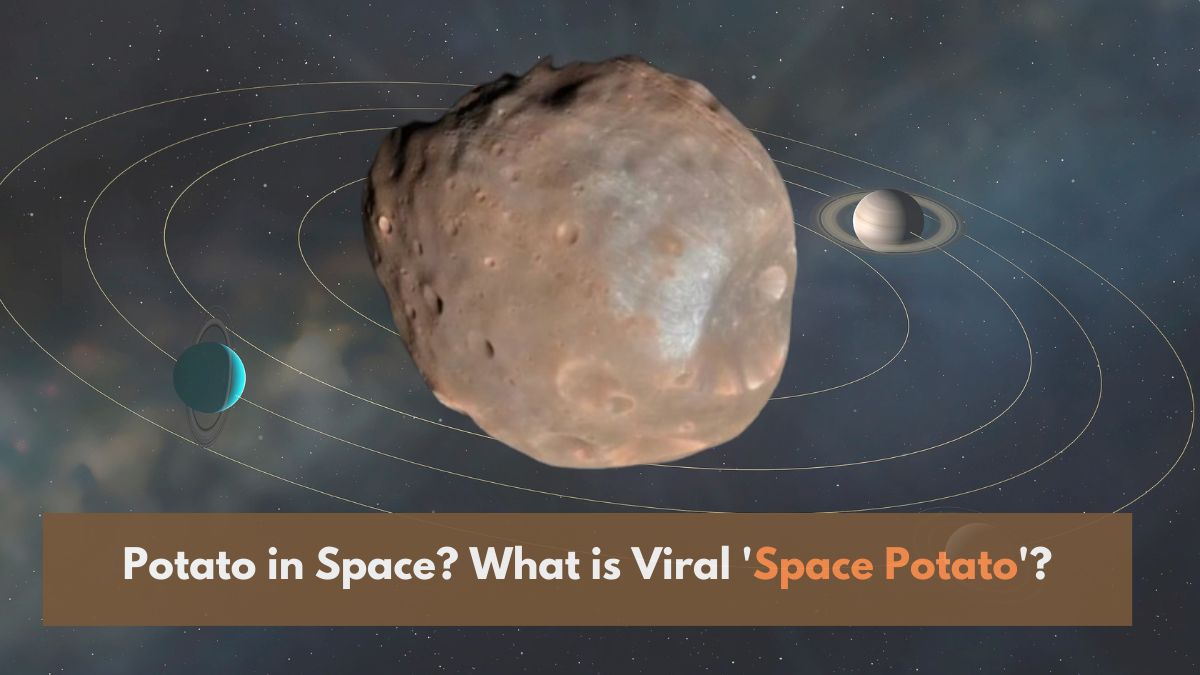NASA’s recent findings in space have captivated the Instagram audience. The social media audience has deemed the object found in the space to be a ‘space potato’.
The photos getting viral are not of an ordinary potato, but of Phobos, one of Mar’s two natural moons. The aforementioned image was captured by the robust and high-resolution HiRISE camera. Since 2006, NASA has been orbiting and researching Mars with the Mars Reconnaissance Orbiter spacecraft, which includes this camera.
Viral ‘Space Potato’
The viral ‘Space Potato’ scientifically named Phobos is 157 times smaller than that of Earth. It is named after the Greek Deity of Terror. Phobos is not the only moon of the planet Mars. It is accompanied by its smaller counterpart, Deimos, named after the Greek god of fear.
Recent studies of Phobos’ bright and uneven surface have led scientists to propose a new theory: Phobos may have originated from the asteroid belt between Mars and Jupiter and could have started its journey as a comet. The scientific community now believes that the two moons, Phobos and Deimos were once stray asteroids that got pulled by Mars’ gravitational, becoming a part Mars space system.
Related Stories
Phobos: The Unstable Moon
Deimos and Phobos have notably unstable orbits. Phobos is inching closer to Mars at a rate of about 1.8 meters (6 feet) per year. It is predicted that Phobos will either crash into Mars’s surface or disintegrate into a ring around the planet, while Deimos will drift away into space in the next 50 million years.
One of Phobos’n most striking features is the 6-mile (10-kilometer) Stickney Crater, named after mathematician Chloe Angeline Stickney Hall, the wife of Asaph Hall, who discovered Mars’ moons in 1877. Streaks of white ice found on Phobos’ surface enhance its unique and captivating appearance.
‘Space Potato’ Origin
The Phobos moon has become a focal point of research for scientists because of its potential connection to the asteroid belt. The rugged terrain and reflective surface of the moon can provide important information on its origin and how it got pulled by the gravitational pull of the planet Mars. The intriguing nature of the two moons of Mars can probably unfold many celestial secrets of the solar system. Its study can also unveil the past of the Martian system and other celestial bodies.
The HiRISE camera’s high-resolution photos have helped researchers to study Phobos’ surface in great detail. Now scientists can better understand Phobos’ possible future interactions with Mars with the help of the pictures. The images also reveal details about the composition and geological past of the moon.
The question of whether Phobos will crash into Mars or form a ring around it adds an element of mystery and urgency to its study. Understanding these orbital variations can help scientists predict the behavior of other moons and celestial bodies in similar situations.
NASA’s recent photo of Phobos, which social media refer to it as “space potato,” shows the continued curiosity of the scientific community about the Martian System. Phobos, with its small size, reflective surface, and notable features like the Stickney Crater, remains an interesting subject for examination.

Shambhu Kumar is a science communicator, making complex scientific topics accessible to all. His articles explore breakthroughs in various scientific disciplines, from space exploration to cutting-edge research.


